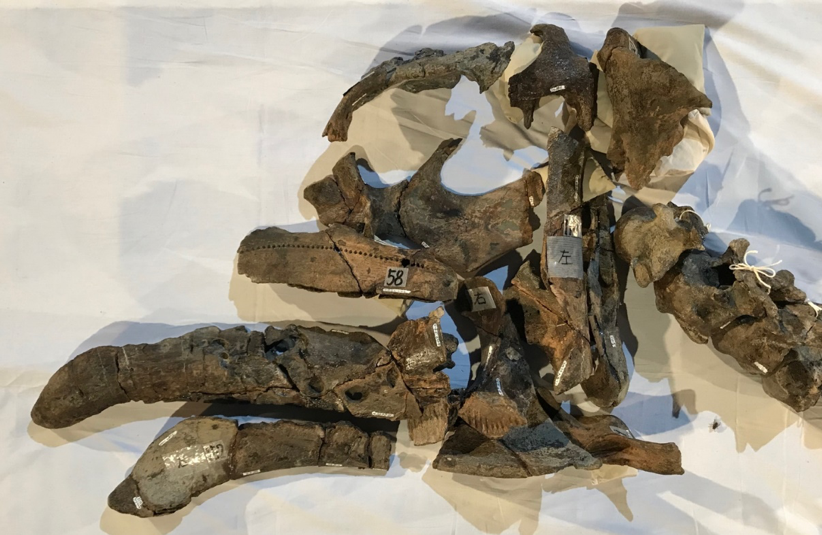Most Complete Dinosaur Skeleton Ever Discovered in Japan Unveiled
- Ken Ecott
- Sep 20, 2018
- 3 min read

The largest fossilised dinosaur skeleton ever unearthed in Japan has been removed from its rocky bed and unveiled to the press.
Scientists for Hokkaido University and Hobetsu Museum have announced the discovery of the fossilised remains bones of “Mukawaryu,” a Late Cretaceous duck-billed dinosaur. In truth, a number of fragmentary fossils relating to a dinosaur had been found some years earlier, most notably caudal vertebrae (tail bones), before a more detailed and larger scale excavation was carried out to determine just how much of the dinosaur skeleton laid buried on a steep slope forming part of the large hills on the island of Hokkaido.

The fossil was discovered in the town in 2003 in a stratum believed to date back 72 million years, during the late Cretaceous period. It's believed that the skeleton was almost completely preserved because at the time, that area lay at the bottom of the sea at a depth of 80 to 200 meters.
Many hundreds of hours of fieldwork later and some six tons of material have been removed containing one hundred and ninety fossils which represent the remains of an eight-metre-long hadrosaurid. The fossils of this duck-billed dinosaur are the largest and most complete dinosaur discovery from Japan. In a country where understatement tends to be the norm, some commentators have stated that the discovery of these fossils represent “one of the greatest discoveries in Japanese dinosaur research history.”

Cleaned Mukawaryu skull
"There is a very high possibility that it's a new species as the skeleton has characteristics not seen in other types of Hadrosaurid," said research team member Yoshitsugu Kobayashi, a Hokkaido University associate professor specializing in ancient animals with backbones.
Scientists are not sure how the terrestrial dinosaur came to be located in offshore rock sediments. Perhaps the dinosaur was washed out to sea and drowned or, the carcase of a dinosaur could have travelled out to sea with the gases inside its large gut keeping it afloat before the body cavity was ruptured and the corpse sank and settled on the seabed. Ammonites and other zonal fossils indicate that the rocks from which the dinosaur was excavated are approximately 72 million years old (Late Campanian to Early Maastrichtian faunal stage).

The fossils of this duck-billed dinosaur represent the largest and most complete dinosaur discovery from Japan.
The “Mukawaryu” skeleton revealed in 2017 was defined as a complete skeleton, as it contained more than 50% of the bones, but now an estimated 60% of the bones have been confirmed as well as 80% of the entire expected skeletal volume. With a significant amount of cranial bones pieced together in addition to more shoulder, forelimb, hip, hind limb, and backbones, the skeleton is now easily discernible as a hadrosaurid .

Japanese dinosaur discoveries are few and far between, with most of Japan’s dinosaurs having been described from a few, isolated fragments. Experts say it’s incredibly rare to unearth so many fossils and be able to piece back together almost the entire skeleton. Researchers from Hokkaido University and Hobetsu Museum are confident that these fossils will prove to be a new species of duck-billed dinosaur. The excavation and preparation work has taken a total of four years. Fortunately, the researchers had been posting regular updates on their progress to keep the inhabitants of the nearby town of Mukawa (on the southern coast of Hokkaido), fully informed and to deter any curious parties attempting to remove any of the partially excavated remains.
The team will now try to identify any further differences between the skeleton and those of other types of Hadrosaurid to determine if this is a new species.
Source: Japan’s largest complete dinosaur skeleton comes to life Hokkaido University







Comments